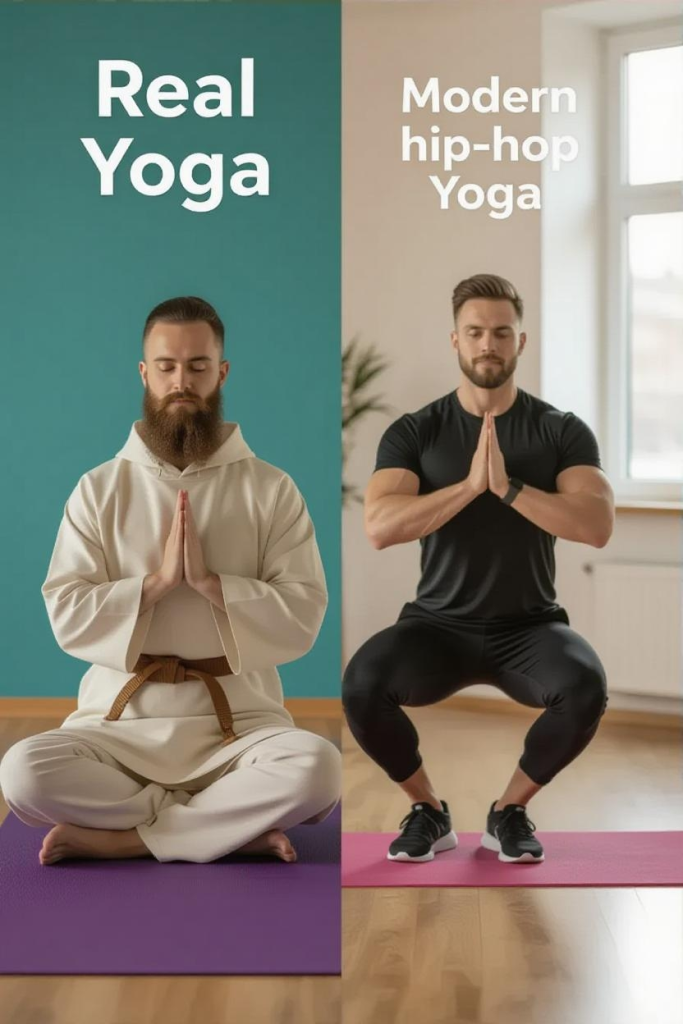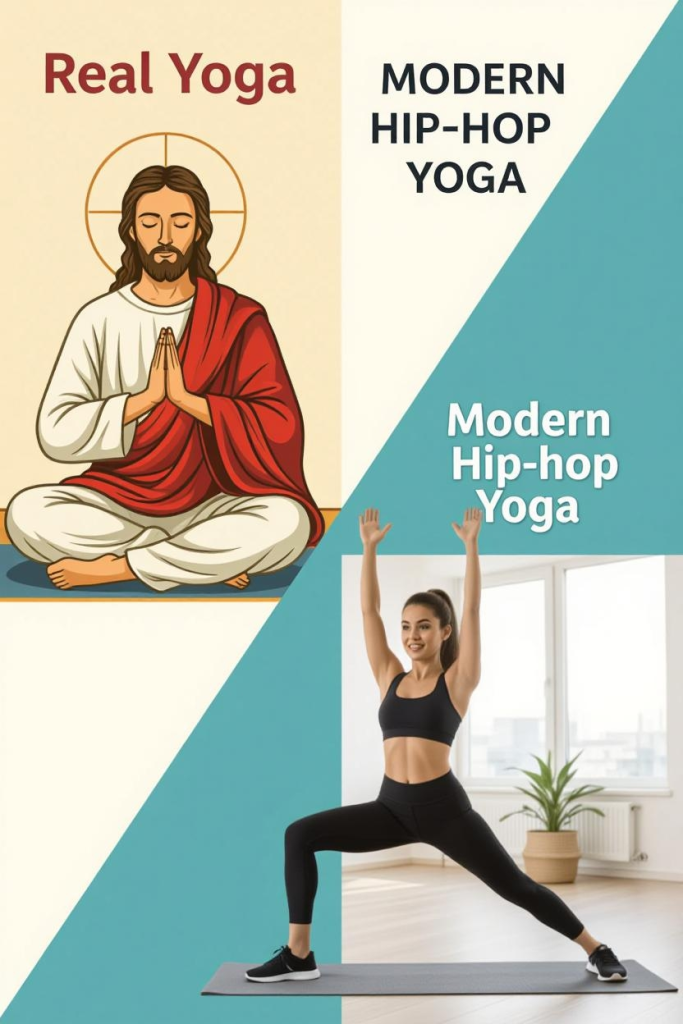
For many in the modern world, yoga has become a symbol of fitness colourful mats, flexible postures, and promises of glowing health. But in truth, yoga was never designed for the body; it was created for the mind. Its original purpose was far deeper than physical wellness it was a spiritual science of self-realisation. The word yoga comes from the Sanskrit root yuj, meaning “to unite.” This union refers not to the body and breath, but to the merging of individual consciousness (ātman) with universal consciousness (Brahman). The primary aim of yoga was:
- To still the fluctuations of the mind (citta-vṛtti nirodha).
- To achieve union (yuj) between the self and the divine reality.
BODY AS A TOOL, NOT THE GOAL
The physical postures (asanas) that dominate modern yoga studios were originally just a means to prepare the body for long hours of meditation keeping it steady, strong, and free from restlessness. The body was seen as a vehicle, not the destination. Good health was a side effect, not the purpose.
MODERN MISINTERPRETATION
In the 20th century, especially after yoga spread to the West, its meaning began to shift dramatically.
- It was repackaged as a health or fitness system.
- Poses were emphasized more than philosophy.
- Breathwork and mindfulness were reduced to forms of “stress management.”

That’s not entirely wrong, it’s just incomplete. Traditional yoga is about inner awareness, self-control, and liberation from illusion, not merely relaxation or flexibility. The modern approach often stops at the surface, focusing on body alignment rather than mental stillness.True yoga begins when movement ends when the body is calm, the breath quiet, and the mind completely still. In this silence, one discovers what the ancient sages sought: the unshakable peace that lies beyond thought and form. Yoga, then, is not a path toward the perfect body, but a journey toward the perfect mind a bridge between the self and the infinite, between chaos and calm, between illusion and truth.
ANCIENT VS MODERN YOGA
Ancient yoga = Mind discipline (for self-realization).
Modern yoga = Body discipline (for stress and health).
Martial Longevity Proves Yoga Was Never Just Exercise: Why Ancient Warriors Lived Long: Without Modern Yoga or the Gym

1. Traditional Practices in Martial Communities
Communities like Jats, Gujjars, Rajputs, and other martial classes and non-martial classes in India had lifestyles that naturally incorporated elements of yoga without formally calling it “yoga”:
- Physical conditioning: Daily farming, herding, and combat training kept the body extremely strong and flexible.
- Breath control and endurance: Long marches, running, wrestling (kushti), and swordsmanship trained breath and stamina, which are core components of pranayama and yogic discipline.
- Meditative practices: Many martial communities practised mental focus, discipline, and meditation, especially before battles, which helped with stress control and longevity.
2. Longevity Factors
Living up to 100 years is rare, but traditional lifestyles offered advantages that modern sedentary life cannot provide:
- Natural diet: Mostly unprocessed, locally sourced foods.
- Active daily life: Constant movement acts like a natural gym.
- Mental resilience: Yoga is as much about the mind as the body focusing the mind reduces stress, which prolongs life.
- Community and purpose: Strong social bonds and a sense of duty enhance mental and physical health.
This is why you often find older martial communities still robust in their lifestyles incorporate yoga principles naturally: body discipline, breath control, meditation, and mental focus.
3. What This Proves:
Yoga is more than postures it is a way of life that integrates body, mind, and discipline.
Martial communities may not have called it “yoga,” but their daily routines embodied its essence, producing longevity, strength, and resilience.
Final Verdict:
Yoga, in its truest essence, was never a wellness program or a flexibility contest. It was and still is a profound mental and spiritual discipline designed to quiet the mind and awaken self-awareness. The ancient sages never twisted their bodies to burn calories; they disciplined their minds to burn ignorance. When yoga crossed oceans, it was stripped of its soul and rebranded as a lifestyle product marketed for stress relief, beauty, and fitness. This modern reinterpretation is not entirely false, but it’s a fragment of the whole truth. Health and calmness are simply by-products, not the destination. The real yoga begins after the sweat, the stretch, and the pose in the stillness that follows. Because yoga was never about touching your toes, it was always about touching your consciousness.

